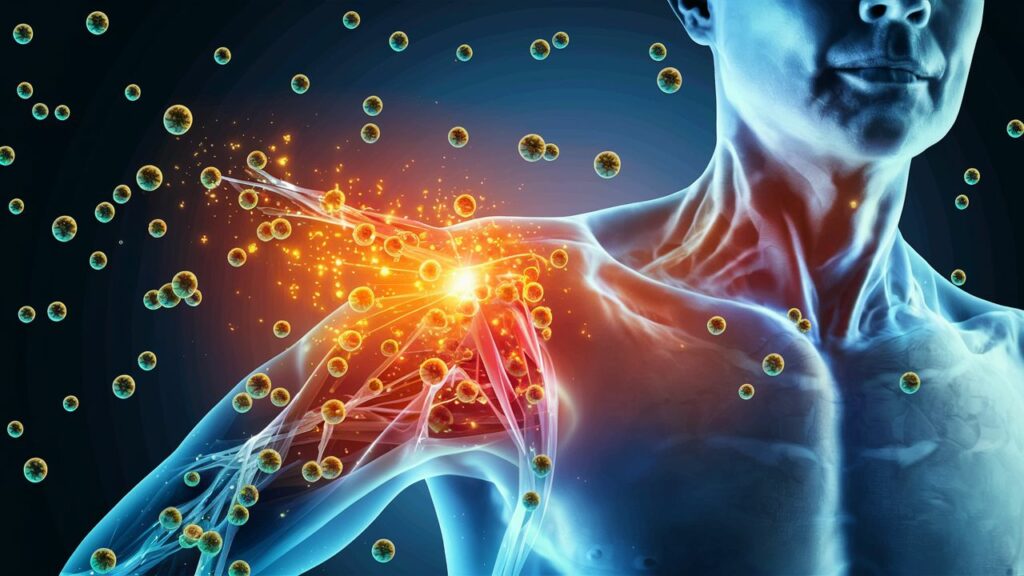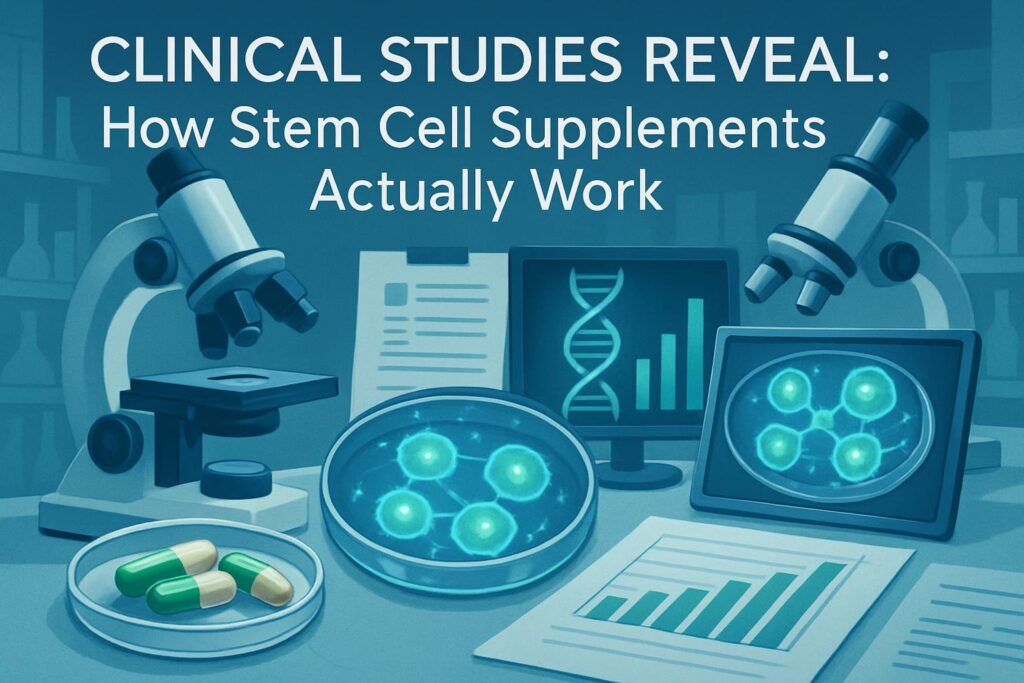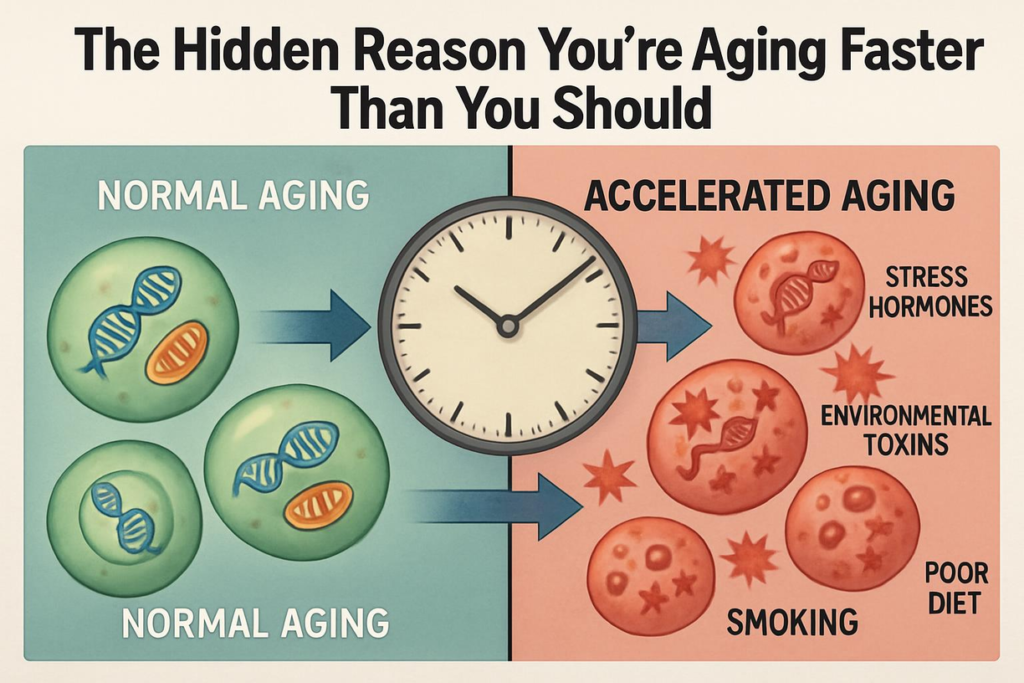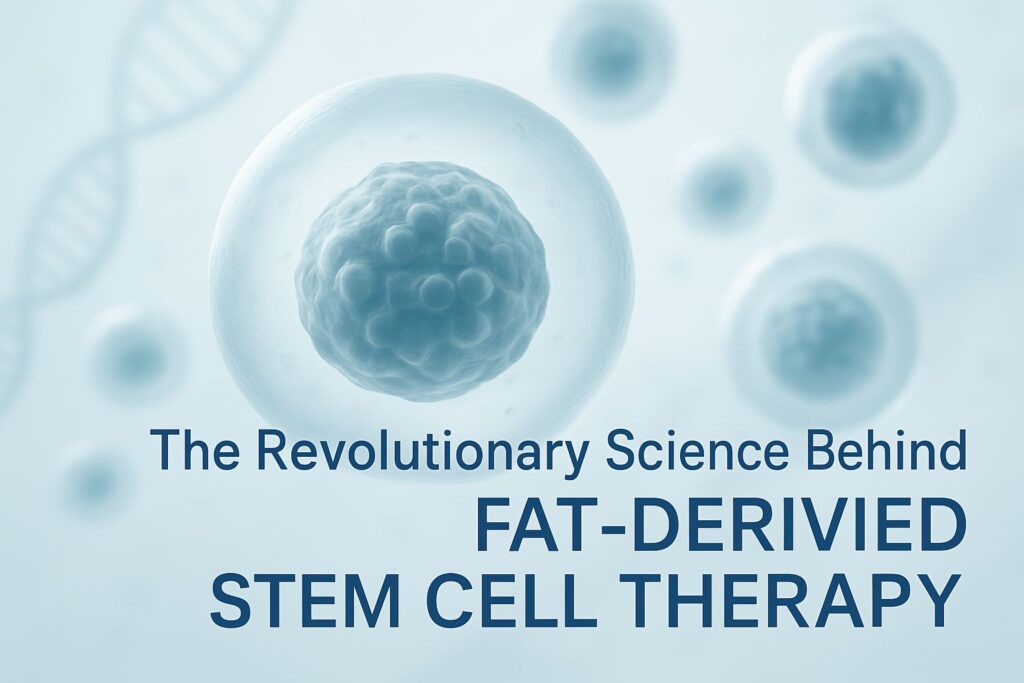Are you tired of living with persistent shoulder pain caused by a rotator cuff injury? Do traditional treatment methods for rotator cuff repair leave you feeling frustrated and seeking alternative options? Look no further – stem cell therapy may hold the key to relieving your pain and promoting tendon repair.
Rotator cuff injuries can be debilitating, causing both physical discomfort and limitations in daily activities. Conventional treatment methods like medication, physical therapy, or surgery often fall short in providing long-lasting relief. However, advancements in regenerative medicine have paved the way for exciting alternatives, such as stem cell therapy.
Stem cell therapy harnesses the potential of your body’s own healing capabilities by utilizing stem cells to promote tissue regeneration. By introducing these specialized cells into the affected area, they can stimulate the repair and rejuvenation process, leading to improved shoulder function and reduced pain.
In the following sections, we will delve into the benefits of stem cell therapy for rotator cuff repair, explore its potential in promoting tendon healing, and discuss the procedure involved in harvesting and applying autologous stem cells. We will also compare stem cell therapy to traditional surgical options and highlight the recovery process and treatment effectiveness associated with this innovative approach.
Key Takeaways:
- Stem cell therapy holds promise as an effective treatment option for rotator cuff repair.
- Traditional treatments may fall short in providing long-lasting relief for rotator cuff injuries.
- Regenerative medicine offers innovative solutions for promoting tendon repair and reducing shoulder pain.
- Stem cell therapy utilizes your body’s own healing capabilities for tissue regeneration.
- Comparing stem cell therapy to traditional surgical options can help you make an informed decision for your rotator cuff repair.
Understanding Rotator Cuff Injuries and Traditional Treatments
When it comes to rotator cuff injuries and disorders, obtaining a thorough understanding of the anatomy and function of the shoulder rotator cuff is crucial. The rotator cuff is a group of muscles and tendons that surround the shoulder joint, providing stability and allowing for a wide range of movement. It consists of four main muscles: the supraspinatus, infraspinatus, teres minor, and subscapularis.
The shoulder rotator cuff plays a vital role in everyday activities that involve lifting, reaching, and throwing, making it susceptible to injuries and wear and tear over time. Rotator cuff injuries commonly occur due to repetitive overhead motions, traumatic events, or degenerative changes associated with aging.
Common symptoms of rotator cuff disorders include persistent shoulder pain, weakness, limited range of motion, and difficulty performing daily tasks. If left untreated, these conditions can significantly impact a person’s quality of life and mobility.
Conventional rotator cuff repair methods have traditionally focused on surgical interventions such as open or arthroscopic procedures. While these techniques have shown some success, they are not without limitations. The recovery process can be lengthy, and results may vary depending on the severity of the injury and individual factors.
To address these limitations and explore alternative treatment options, researchers and medical professionals have turned their attention to regenerative medicine and stem cell therapy. These innovative approaches aim to harness the body’s natural healing capabilities and promote tissue regeneration, offering new hope for individuals with rotator cuff injuries.
| Traditional Treatments | Stem Cell Therapy |
|---|---|
| Surgical interventions (open or arthroscopic procedures) | Regenerative medicine approach |
| Lengthy recovery process | Potentially shorter recovery time |
| Variable results depending on injury severity | Promotes tissue regeneration |
Stem Cell Therapy for Rotator Cuff Repair Options
In the realm of regenerative medicine, stem cell therapy offers promising options for treating rotator cuff tears. Stem cells have the potential to promote healing and regeneration of the damaged rotator cuff tissue, providing a viable alternative to traditional treatment methods.
One of the key advantages of using stem cells for rotator cuff repair is their ability to differentiate into various cell types, including tendon cells. This means that when introduced into the injured area, stem cells can help facilitate the formation of new tendon tissue, aiding in the repair process.
Regenerative medicine plays a crucial role in enhancing outcomes for patients with rotator cuff tears. By harnessing the regenerative potential of stem cells, scientists and clinicians are able to address the underlying causes of the injury, rather than merely alleviating symptoms. This innovative approach offers the potential for long-lasting, natural healing and restoration of function.
When considering options for rotator cuff repair, it is essential to explore stem cell therapy as a viable alternative. The regenerative capabilities of stem cells, combined with the principles of regenerative medicine, provide a promising avenue for restoring shoulder health and improving overall well-being.
Comparison of Stem Cell Therapy and Traditional Surgical Options for Rotator Cuff Repair
| Stem Cell Therapy | Traditional Surgical Options | |
|---|---|---|
| Healing Mechanism | Stimulates natural healing and tissue regeneration | Relies on sutures to reconnect torn tendons |
| Recovery Time | Generally shorter due to less invasive nature of the procedure | Requires longer recovery and rehabilitation period |
| Risks and Complications | Minimal risk of infection or post-operative complications | Potential for surgical site infection, nerve damage, or failed healing |
| Long-term Outcomes | Promotes natural healing and tissue regeneration, potentially improving long-term outcomes | Depends on the success of the surgical repair and individual patient factors |
Compared to traditional surgical options, stem cell therapy offers several advantages. These include a less invasive procedure, faster recovery time, reduced risk of post-operative complications, and the potential for improved long-term outcomes. It is important to consult with a healthcare professional to determine the most appropriate treatment option for your specific condition.
The Promising Role of Mesenchymal Stem Cells in Tendon Repair
Mesenchymal stem cells (MSCs) hold tremendous potential in the field of regenerative medicine, particularly in tendon repair and healing of the rotator cuff. These adult stem cells, found in various tissues of the body, have unique biological characteristics that make them ideal for therapeutic applications.
Biological Characteristics of Mesenchymal Stem Cells
MSCs possess self-renewal capabilities, allowing them to proliferate and differentiate into multiple cell types, including tendon cells. They can be easily isolated from different sources, such as bone marrow and adipose tissue, making them readily accessible for clinical use. As adult stem cells, MSCs offer the advantage of avoiding ethical concerns associated with embryonic stem cells.
Additionally, MSCs have immunomodulatory properties, meaning they can regulate the body’s immune response to reduce inflammation and promote tissue repair. They produce various bioactive molecules that have anti-inflammatory effects and stimulate the release of growth factors, promoting angiogenesis and tissue regeneration.
The ability of MSCs to migrate to sites of injury further enhances their therapeutic potential. Once they reach the damaged tendon or rotator cuff, they can promote the formation of new blood vessels and stimulate the production of extracellular matrix components, facilitating tendon healing.
For these reasons, mesenchymal stem cells have emerged as a promising approach for tendon repair, including rotator cuff healing.
How Mesenchymal Stem Cells Enhance Rotator Cuff Healing
The introduction of MSCs into the injured rotator cuff can significantly enhance the healing process. Once injected, these cells home to the damaged area and release various growth factors and cytokines that promote tissue regeneration and modulate the inflammatory response.
Studies have shown that MSCs stimulate the proliferation and migration of tendon cells, accelerating the production of collagen and extracellular matrix, crucial components for tendon strength and integrity. They also suppress the release of inflammatory cytokines, reducing inflammation and preventing excessive scar tissue formation.
Furthermore, MSCs have been found to enhance neovascularization, the formation of new blood vessels in the injured area. This increased blood supply provides the necessary nutrients and oxygen for tissue healing and supports the proper integration of the repaired tendon with the surrounding structures.
Overall, the unique biological characteristics of mesenchymal stem cells, combined with their regenerative potential and immunomodulatory properties, make them a promising therapeutic option for enhancing tendon repair and promoting the healing of the rotator cuff.
| Biological Characteristics of Mesenchymal Stem Cells | How Mesenchymal Stem Cells Enhance Rotator Cuff Healing | |
|---|---|---|
| Self-renewal capabilities | Stimulate proliferation and migration of tendon cells | |
| Multiple sources for isolation | Release growth factors and cytokines for tissue regeneration | |
| Immunomodulatory properties | Suppression of inflammatory cytokines and scar tissue formation | |
| Ability to migrate to sites of injury | Enhancement of neovascularization for improved blood supply |
Procedure Overview: Harvesting and Applying Autologous Stem Cells
In the process of using autologous stem cells for rotator cuff repair, there are two key steps involved: the extraction of stem cells from the patient’s own body and the subsequent application of these cells to promote tissue repair. This section provides an overview of these procedures and highlights the role of stem cell therapy in the healing process.
Extraction of Stem Cells from the Patient’s Own Body
The first step in the procedure is the extraction of autologous stem cells from the patient’s body. This involves collecting a sample of tissue, typically from a suitable donor site such as the bone marrow or adipose (fat) tissue. The collected sample is then processed to isolate the stem cells, which have the unique ability to differentiate into various cell types and contribute to tissue regeneration.
The extraction process is minimally invasive and can usually be performed as an outpatient procedure. It is carried out under local anesthesia, ensuring a comfortable experience for the patient. The collected tissue sample is processed in a specialized laboratory to separate the stem cells from other cellular components, resulting in a concentrated solution of autologous stem cells ready for application.
Navigating the Treatment: From Harvesting to Injection
Once the autologous stem cells have been extracted, they are ready for application to the damaged rotator cuff. The injection of stem cells into the affected area is typically guided by imaging techniques, such as ultrasound or fluoroscopy, to ensure precise targeting and optimal delivery.
The injection of autologous stem cells into the rotator cuff tear site promotes tissue repair by stimulating the body’s natural healing mechanisms and enhancing the regeneration process. These cells have the potential to differentiate into tendon-like cells and support the growth of new tissue, facilitating the restoration of the rotator cuff’s structural integrity and function.
Throughout the treatment process, close monitoring and follow-up evaluations are conducted to assess the patient’s progress and ensure the effectiveness of the stem cell therapy. The specific protocol and timeline for these evaluations may vary depending on individual factors, such as the severity of the rotator cuff tear and the patient’s overall health.
Stem cell therapy has emerged as a promising approach for rotator cuff repair, offering the potential for improved outcomes and enhanced tissue repair. By harnessing the regenerative capabilities of autologous stem cells, this innovative treatment option provides a viable alternative to traditional surgical methods, with the potential to optimize shoulder function and restore quality of life for patients with rotator cuff injuries.

Treating Rotator Cuff Tears with Stem Cell Rotator Cuff Repair
If you have experienced rotator cuff tears, stem cell rotator cuff repair may offer a promising treatment option for you. Stem cell therapy has shown potential in promoting tendon-bone healing and improving shoulder function in patients with rotator cuff tears.
By harnessing the regenerative properties of stem cells, this innovative approach aims to stimulate the body’s natural healing processes and enhance the repair of damaged tissues in the rotator cuff. Stem cells have the ability to differentiate into various cell types, including tendon and bone cells, which are crucial for tendon-bone healing.
Through the injection of stem cells directly into the site of the tear, stem cell rotator cuff repair seeks to facilitate the regeneration of healthy tendon tissue and promote the integration and healing of the tendon-bone interface. This targeted approach offers the potential for more effective and efficient healing compared to traditional treatment methods.
Furthermore, stem cell therapy can also help improve shoulder function by promoting tissue repair and reducing inflammation. By addressing the underlying cause of the tear and promoting the regeneration of healthy tissue, stem cell rotator cuff repair has the potential to restore range of motion, reduce pain, and enhance overall shoulder function.
It is important to consult with a qualified healthcare professional to determine if stem cell therapy is a suitable treatment option for your rotator cuff tears. They will be able to evaluate your specific condition and provide personalized recommendations based on your individual needs and medical history.
Overall, stem cell rotator cuff repair offers an exciting alternative to traditional treatment methods for rotator cuff tears. By harnessing the regenerative potential of stem cells, this innovative approach aims to promote tendon-bone healing and improve shoulder function, providing hope for patients seeking effective and long-lasting relief.
Comparing Stem Cell Therapy and Traditional Surgical Options
When it comes to treating rotator cuff injuries, patients have traditionally relied on surgical options to repair the damaged tendon. However, in recent years, stem cell therapy has emerged as a promising alternative for rotator cuff regeneration. Let’s take a closer look at the benefits of stem cell therapy over surgery and what you can expect in terms of recovery and treatment effectiveness.
Benefits of Stem Cells Over Surgery for Rotator Cuff Regeneration
Stem cell therapy offers several advantages over traditional surgical options for rotator cuff repair. One of the key benefits is that stem cells have the potential to promote natural regeneration of the damaged rotator cuff tendon. Unlike surgery, which involves the removal and reattachment of the tendon, stem cell therapy stimulates the body’s own healing mechanisms, leading to more natural and effective recovery.
In addition, stem cell therapy is a minimally invasive procedure that avoids the risks and complications associated with surgery. It does not require large incisions, minimizing the risk of infection and reducing scarring. This makes it a favorable option for individuals who prefer a less invasive approach to treatment.
Recovery and Effectiveness: What to Expect with Stem Cell Treatment
Recovering from rotator cuff repair is a crucial phase of the treatment process. With stem cell therapy, the recovery period tends to be shorter compared to surgery. Since the procedure does not involve major surgical intervention, most patients experience less pain and swelling post-treatment.
Moreover, stem cell therapy has shown promising results in terms of treatment effectiveness. Clinical studies have demonstrated the ability of stem cells to promote tendon healing and improve shoulder function. Patients have reported significant pain relief, increased range of motion, and improved overall shoulder function after undergoing stem cell treatment for rotator cuff repair.
With these advantages in mind, stem cell therapy emerges as a compelling option for individuals seeking effective rotator cuff regeneration without the risks and drawbacks of surgery. It offers the potential for natural healing, a shorter recovery period, and improved treatment outcomes. If you are considering treatment for your rotator cuff injury, it is worth exploring the benefits that stem cell therapy can provide.
Conclusion
Stem cell therapy offers promising potential as a valuable treatment option for rotator cuff repair. Throughout this article, we have explored the benefits of stem cell therapy for managing shoulder pain, promoting tendon repair, and improving shoulder function. By harnessing the regenerative power of stem cells, patients with rotator cuff injuries can potentially experience improved healing and long-term outcomes.
The field of regenerative medicine is advancing rapidly, and stem cell therapy stands out as an innovative approach to rotator cuff repair. Unlike traditional surgical options, stem cell therapy offers a less invasive alternative that focuses on promoting the body’s natural healing processes. This approach can lead to enhanced tissue regeneration and improved shoulder function.
As research continues to advance in the area of stem cell therapy, we anticipate even more breakthroughs in the treatment of rotator cuff injuries. By understanding the potential of regenerative medicine and exploring alternative options like stem cell therapy, individuals suffering from shoulder pain or rotator cuff tears can find hope in the prospect of improved well-being and restored shoulder function.
FAQ
What is stem cell therapy for rotator cuff repair?
Stem cell therapy for rotator cuff repair is a regenerative medicine treatment option that utilizes the patient’s own stem cells to enhance the healing and regeneration of the rotator cuff tendon.
How does stem cell therapy promote rotator cuff healing?
Stem cell therapy promotes rotator cuff healing by providing the necessary cell types and growth factors to support tissue repair and regeneration in the damaged area.
Am I a good candidate for stem cell therapy?
The suitability of stem cell therapy for rotator cuff repair depends on the individual case. It is best to consult with a healthcare professional to determine if you are a good candidate for this treatment option.
How are stem cells extracted for rotator cuff repair?
Stem cells can be extracted from various sources, such as bone marrow or adipose tissue. The extraction process typically involves a minimally invasive procedure to obtain the patient’s own stem cells.
What are the potential benefits of stem cell therapy for rotator cuff repair?
Stem cell therapy for rotator cuff repair offers potential benefits such as improved tendon healing, enhanced shoulder function, and reduced pain and inflammation.
How does stem cell therapy compare to traditional surgical options?
Stem cell therapy offers a non-invasive alternative to traditional surgical options for rotator cuff repair. It promotes natural healing and regeneration without the risks and recovery time associated with surgery.
What is the recovery process like after stem cell treatment?
The recovery process after stem cell treatment for rotator cuff repair may vary depending on the individual and the extent of the injury. It is important to follow the recommended rehabilitation and physical therapy protocols to optimize healing and shoulder function.
How effective is stem cell therapy for rotator cuff repair?
The effectiveness of stem cell therapy for rotator cuff repair can vary from person to person. While research and clinical studies have shown promising results, individual outcomes may vary based on factors such as the severity of the injury and the patient’s overall health.



